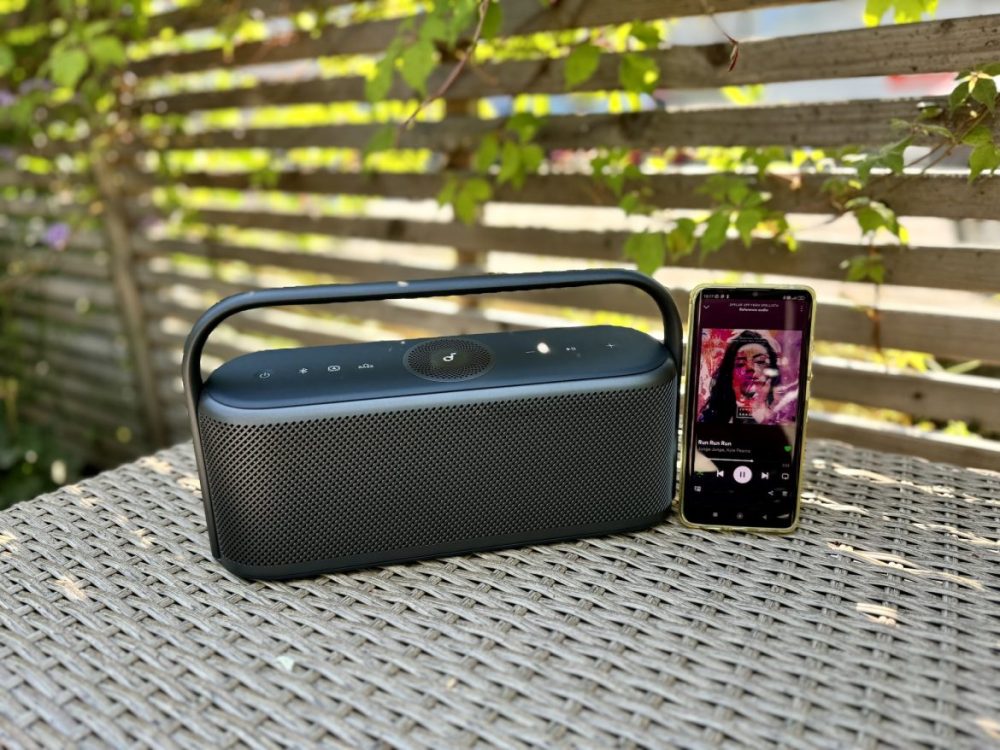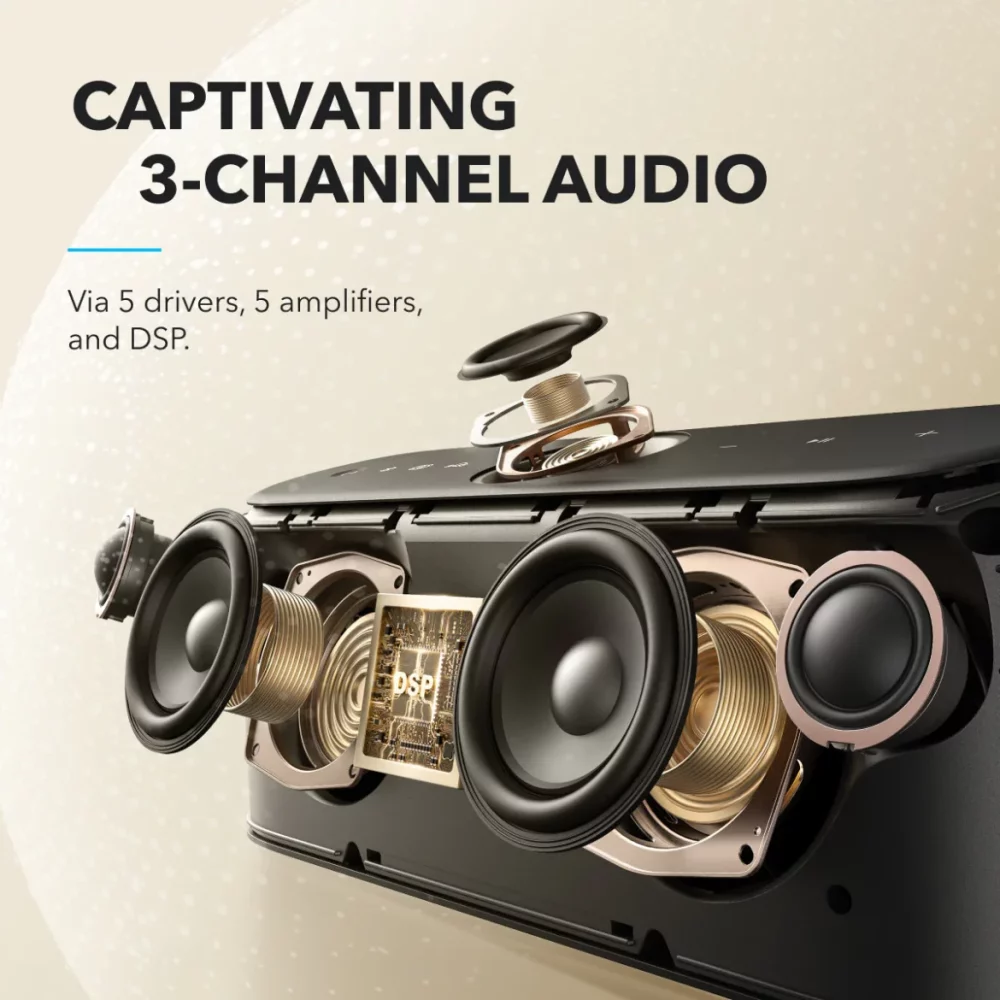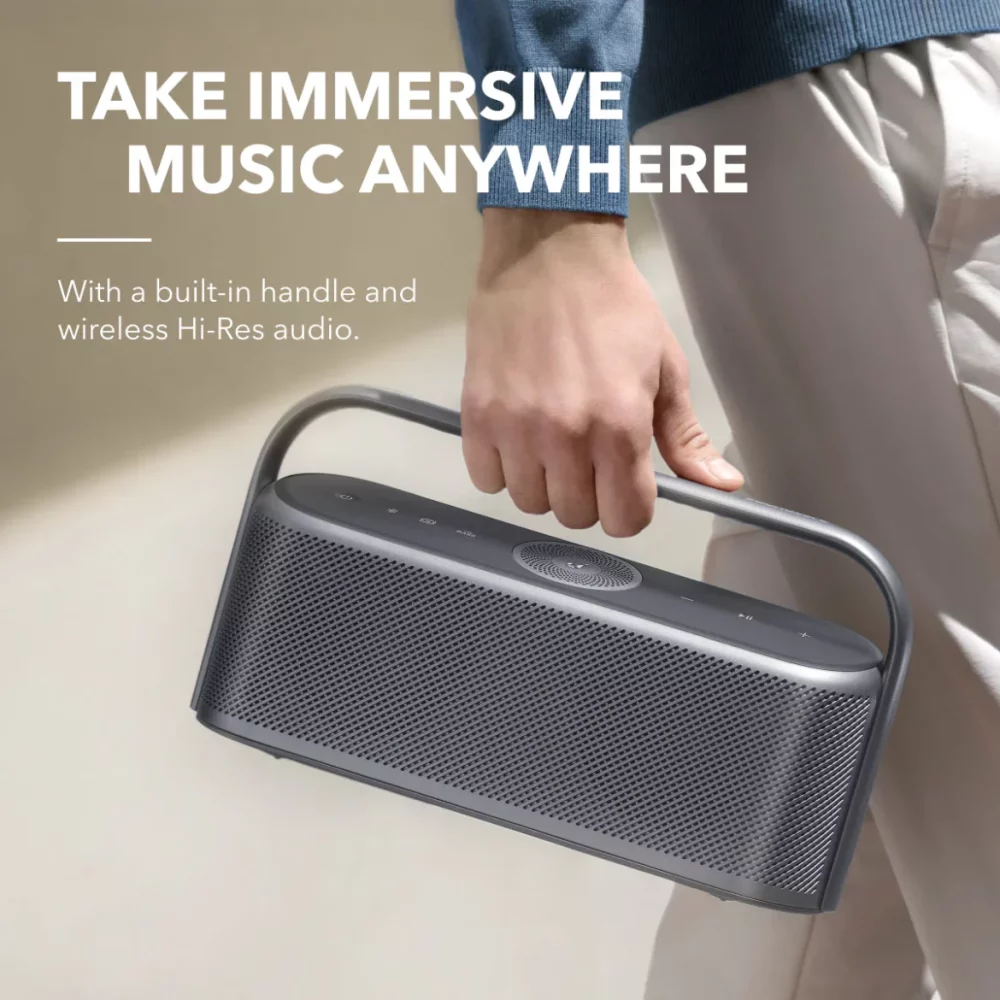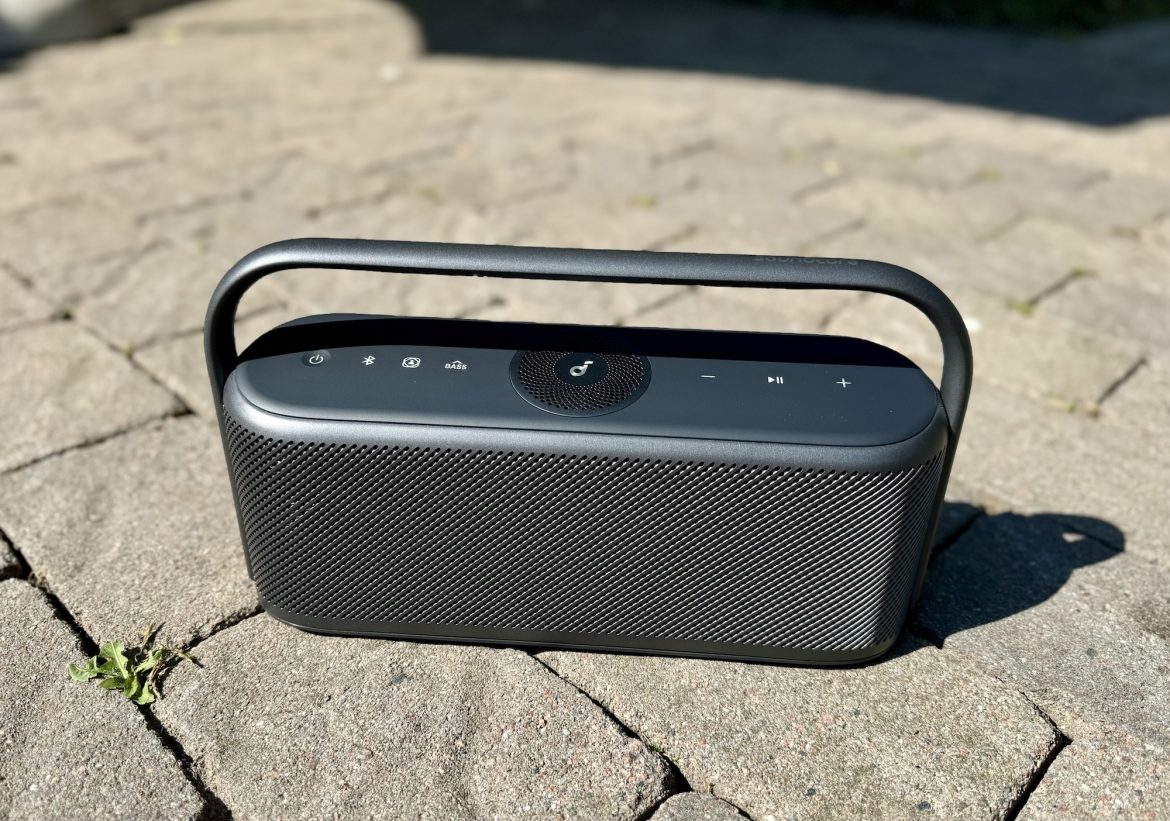TL;DR
Anker's Soundcore Motion X600 portable speaker impresses with its powerful 50W sound, surprisingly effective spatial audio, and robust build, even outperforming older competitors. While a bit heavier and pricier than some, its solid performance, app control, LDAC support, and IPX7 rating make it a top contender for best portable speaker. Discover if its virtual soundscape is your next audio upgrade!
Senses boasts the most extensive archive of headphone reviews in the Nordics, including numerous tests of headphones from Anker Soundcore. Now, as they venture into the portable speaker market, we evaluate their performance and compare their offering against our current leading portable speaker.
The Anker Soundcore Motion X600 is a portable speaker featuring five drivers, a design intended to create a virtual soundscape, and an output of 50W, aiming to deliver a powerful audio experience in a compact form factor. This aims to improve upon last year’s larger outdoor favorite, the Sharp Sumo LS100. Upon unboxing, the first impression is its solidity and denser-than-expected build; while not diminutive, its weight is substantial at 2.88 kg. This heft often suggests higher quality internal components.
The Motion X600 is available in three colors and features a design that blends sleekness with a touch of retro aesthetics. The black model we tested has a subtle metallic finish. The fixed handle design presents both advantages and disadvantages. While its rigidity likely contributes to sound quality, its inability to fold down might be an aesthetic drawback for some users seeking a cleaner look when placed on a surface. The rear of the unit features a protected compartment with a rubber cover, housing a USB-C charging port and an AUX input. Absent is an SD card reader, a common feature in this category, which would allow for local music playback in areas with unreliable internet connectivity.

Features and EQ Customization
The Motion X600 seamlessly integrates with the Soundcore app, which we have covered extensively in previous reviews. The app facilitates firmware updates and allows users to adjust EQ settings to their preferences. The default EQ preset, Soundcore Signature, offers a vibrant and engaging sound profile, especially with the Bass Up option enabled. Alternative modes like Treble Boost and Voice mode can be useful depending on the audio content, such as spoken-word recordings or radio broadcasts.
Regular Senses readers will know that we approach digital signal processing (DSP) with a critical eye, particularly when it comes to virtual surround sound technologies. These often compromise audio fidelity in an attempt to simulate a more immersive experience. Soundcore heavily promotes the Spatial Audio feature, a technique used in headphones and soundbars to create the impression of a multi-channel surround sound system. Surprisingly, in this implementation, it proves effective. Engaging Spatial Audio enhances the vibrancy and clarity of most audio material, and we rarely found instances where disabling it was necessary due to undesirable distortion. The effect is genuinely impressive (further details are provided in the review below).
The estimated battery life is 12 hours, which is a reasonable expectation. Actual battery performance will vary depending on factors such as volume level, bass intensity, audio file type, and Bluetooth connection quality. The inclusion of LDAC support is noteworthy, enabling high-resolution audio streaming at up to three times the data rate of standard SBC (a point of consideration for Apple users). With a compatible Android device (version 8.0 or later) and a high-quality streaming service like lossless Tidal, a maximum bitrate of 990 kb/s is achievable, potentially resulting in an audible improvement. However, the difference here is subtle. The IPX7 rating is another notable feature, indicating that the speaker can withstand submersion in water for up to 30 minutes (provided the rear port cover is securely sealed). While we did not test this claim directly, it inspires confidence in the speaker’s durability, especially in unpredictable weather conditions.

The speaker also incorporates a built-in microphone. However, this is not for voice commands, but rather for internal sound calibration and optimization.
Sound Quality Assessment
We are using Creative’s iRoar GO as a baseline comparison. While still a capable speaker, it is now several years old. Its size is about half of that of the Motion X600. It also weighs and costs approximately a third of the X600 (810 grams and approximately SEK 900). While advancements in audio technology may not be as dramatic as in other fields like processor development, significant progress has been made since 2017.

To ensure a fair comparison, all testing was conducted using the SBC codec, the most universally supported codec, operable without specialized hardware or technical knowledge. Spatial Audio was enabled on the Motion X600.
Our standard reference tracks were used. Junge Junge‘s Run Run Run, a well-mixed song with a strong drive and punchy bass, can become boomy on some systems. The X600 handles it with confidence, filling the room with bass when Bass Up is active, though it approaches the edge of becoming slightly uncontrolled. The iRoar GO still performs admirably for its size and age, but its midrange sounds comparatively weaker, and the X600 delivers superior presence.
Slowing the tempo with Haley Reinhart‘s rendition of Can’t help Falling in Love reveals a delicate piano arrangement and Reinhart’s vocals, which cut through the mix while creating an encompassing soundscape. The difference between the X600 and iRoar GO is less pronounced here. The Creative produces a warmer sound, but lacks the precise clarity of the X600. The low end sounds somewhat congested on the iRoar GO, and the soundstage isn’t as sharp (Spatial Audio on the X600 makes a considerable difference). Despite having the same number of speakers, the DAC, driver sizes, and signal processing algorithms differ significantly, resulting in variations in sound reproduction.

Moving to classic hip hop with Dr. Dre‘s Xxplosive, the X600 delivers a lively and engaging performance. The bass provides a solid foundation, and all instruments and nuances are well-represented. However, Dre’s vocals sound slightly nasal on the Soundcore with Spatial Audio enabled. The iRoar’s rumbling bass and lower frequencies are more flattering and unified, although this comes at the expense of detail. Disabling Spatial Audio evens the playing field.
When Tchaikovsky‘s Swan Lake Op 20 Suite 1 begins, the dramatic swells are compelling. The cello section has ample space, while the strings maintain their prominence. The X600 struggles slightly with the highest frequencies in the wind instruments, but overall, it offers a highly enjoyable experience for classical music enthusiasts. The iRoar lacks the resources to keep pace, resulting in a narrower soundstage and reduced dynamic range, although its performance remains impressive for its size and price.
Conclusion
The Anker Soundcore Motion X600 is undoubtedly a highly capable speaker, with ample technological features and robust build quality. The price point of approximately SEK 2,000 may be slightly higher than some users would prefer, and the omission of a memory card slot is a minor drawback for those venturing into areas with poor network connectivity (although the audio quality of MP3 files is significantly lower than modern streaming services). Its weight and size are on the larger side for a portable speaker, but remain within reasonable limits and are not major concerns. While the Creative iRoar GO remains a respectable speaker for its price and size, it is outclassed by the feature-rich, larger, heavier, and more expensive Motion X600, which ascends to the reference throne as the leading portable speaker of 2024.
Anker Soundcore provided a review unit for this evaluation. Provision of review samples does not influence our editorial independence. Our reviews are conducted independently and prioritize the interests of our readers and consumers.

